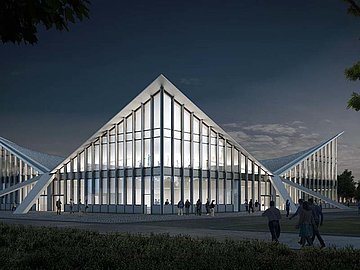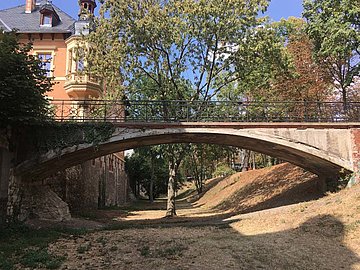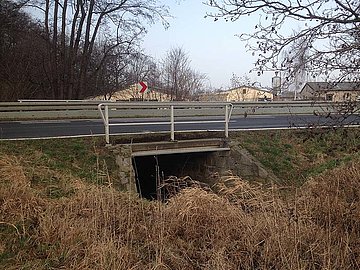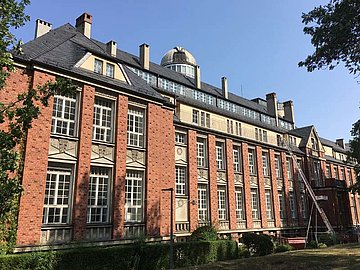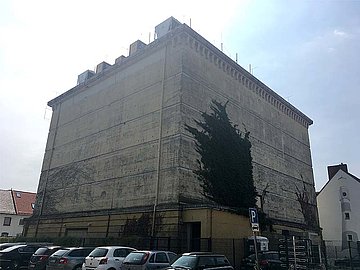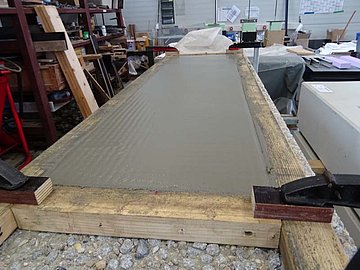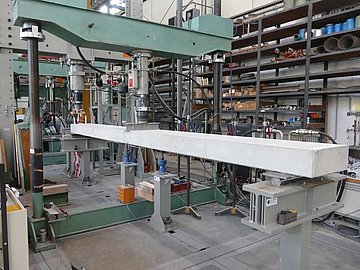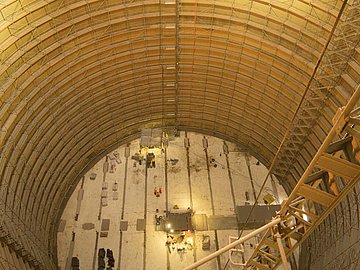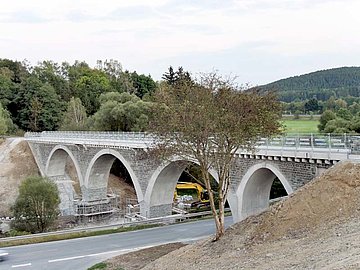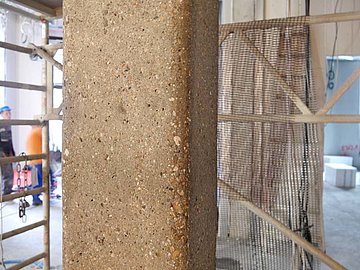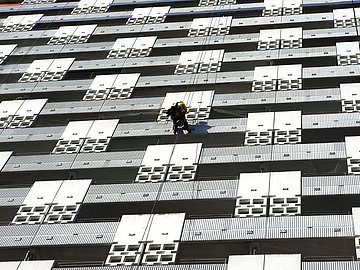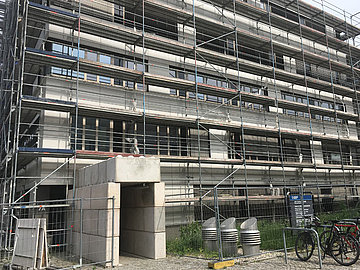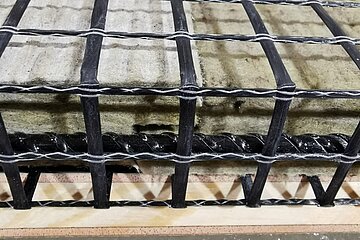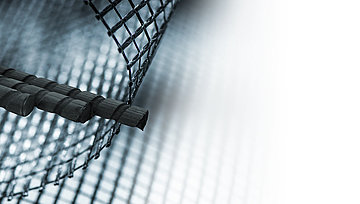
THE CARBON CONCRETE PRINCIPLE
Carbon reinforced concrete is a composite material consisting of two high-performance materials. The innovative combination of carbon fibre fabrics or bars with fine-grained concrete simultaneously enables significantly more varied shapes and a high load-bearing capacity. Due to the corrosion resistance of the fabrics and rebars, the concrete cover and thus the use of resources can be reduced to a minimum. Carbon reinforced concrete can be used for sustainable, resource-saving, less material-intensive and lighter construction.
Photos © Ansgar Pudenz, DZP 2016 (mats); CARBOCON (rods)
Steel reinforced concrete vs. carbon reinforced concrete – a sustainable alternative
Since its introduction, steel reinforced concrete as a load-bearing building material has made possible the construction of important buildings, and that in a very short time and in robust designs. However, due to their susceptibility to corrosion, the service life of steel reinforced concrete structures falls far short of earlier expectations. Many buildings are hardly older than the people who use them. With more than 100 million cubic metres used in construction each year, steel reinforced concrete is the most important building material in Germany.
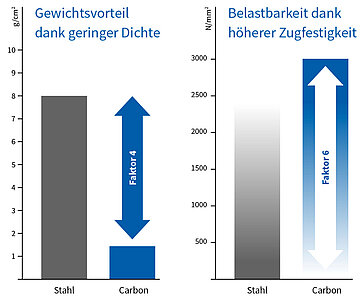
The use of concrete as the world's most frequently used building material after water has always led to a high consumption of raw materials and energy. In addition, steel is subject to enormous price fluctuations due to its versatile use in construction and other industries.
This is exactly where the new carbon reinforced concrete comes in. It reduces the total consumption of materials and replaces steel with carbon. Since carbon does not rust, less concrete is required to protect the steel from corrosion. Carbon reinforced concrete can be used for sustainable, resource-saving, less material-intensive and lighter construction.
Both flexible and sustainable – The technology behind it
The advantage lies in the approx. 50,000 individual fibres, which are much thinner than a human hair. These fibres are combined into a yarn, processed to form a grid structure and coated. Compared to steel, carbon is four times lighter with six times more load-bearing capacity. Carbon reinforced concrete not only makes it possible to create much slimmer and more delicate new structures, but also to strengthen and repair existing structures, which then have a much longer service life. Architecturally, versatile building geometries can be realised that are difficult to achieve with steel reinforced concrete. 'Lightweight construction' and 'concrete' are no longer a contradiction in terms, but a concept for the future.
The origins of concrete
Concrete is more than 10,000 years old. Archaeological finds show that concrete-like building materials were used even 10,000 years ago. These building materials were found in millennia-old buildings on the territory of present-day Turkey and on the pyramids in Egypt. The next stage of development was the use of opus caementicium in ancient Rome, as in the construction of the Pantheon, for example.
Concrete in the Age of Industrialisation
Steel reinforced concrete since the middle of the 19th century (1867 patent by Joseph Monier) to compensate for the low tensile strength of concrete with the high tensile strength of steel.
Notable advantages: non-combustible/high fire resistance; available everywhere, cheap, can be formed into any shape
Notable disadvantages: less delicate and high dead weight; corrosion of the reinforcing steel necessitating concrete covering; high use of resources and materials
Introduction of the term steel reinforced concrete
Around 1900 emergence of the term "steel reinforced concrete" and around 1920 first experiments with pre-stressed concrete: Prestressed concrete is a further development of steel reinforced concrete whereby an axial force is introduced by prestressing the steel before concreting. This prestressing allows longer spans for beams and girders with the same ceiling height due to lower deformations.
Beginnings of textile reinforced concrete
In the 1990s, researchers from Dresden worked for the first time on a composite material made of textile fibres and high-performance concrete. Textile fibre enables a weight reduction due to the elimination of the concrete covering required in steel reinforced concrete to protect the steel.
Crucial basic research
Between 1999 and 2011, under the initiative and leadership of Prof. Curbach and Prof. Hegger, more in-depth research into textile reinforced concrete has been carried out in two Collaborative Research Centres of the Deutschen Forschungsgemeinschaft in Dresden and Aachen. From 2000 onwards, the standards of textile reinforced concrete made of fibreglass have been further developed through the use of new materials such as carbon and basalt. An initial summary is given under the general term 'carbon concrete'.
First pilot applications in practice
In 2005, the planning, design and construction of the first bridge made of textile reinforced concrete took place as part of the State Horticultural Show in Oschatz/Saxony. In 2006, following the planning and approval processes, the first reconstruction using carbon concrete on an existing structure took place - here on the Schweinfurt hyperdome.
First national technical approval and largest construction research project in Germany
In 2013, on the basis of years of research and pilot applications, the German Institute for Building Technology issued the first national technical approval for the use of carbon reinforced concrete in strengthened concrete structures. In the same year, the responsible ministry of the Federal Republic of Germany approved the largest construction research project in Germany with the aim of implementing carbon reinforced concrete across the board in the construction industry.
Founding of CARBOCON as a leading supplier in the hotspot of Dresden
At the end of 2014, after a preparatory phase, CARBOCON GmbH was founded as a transfer service provider. The aim was to transfer the knowledge quickly, competently and professionally into construction practice and industry. More than 160 partners from industry, universities, public authorities and other stakeholders make up the competence network C³.
Future prize for carbon reinforced concrete
At the end of 2016, former Federal President Joachim Gauck awarded the German Future Prize to the Dresden carbon reinforced concrete researchers Prof. Manfred Curbach (shareholder of CARBOCON GmbH), Prof. Chokri Cherif and Prof. Peter Offermann of the TU Dresden.
Reinforcement
Anyone who speaks of carbon reinforced concrete inevitably thinks of carbon and concrete. Carbon is one of the typical materials. However, carbon is by far not the only material. Basalt and fibreglass reinforcements can also be used, for example. The form in which these materials are used as reinforcement highly depends on the intended use and technical requirements. Rod reinforcements of various dimensions are likely to be known and familiar to most parties involved in the construction industry. Carbon reinforced concrete, on the other hand, uses very light but high-performance rods made of carbon or other materials. Fabrics are also used as an alternative to rods. These fabrics are very thin net structures made of fibre strands with different densities, which are produced in multi-stage manufacturing processes and can be delivered to the construction sites in rolls or mats.
Concrete
Concrete has been the most widely used building material in the last 120 years. Concrete contributed significantly to the expansion of infrastructure, urban and industrial development and thus formed the basis for a diverse and modern society. Structural engineering developed an architectural language of its own. The innovative carbon reinforced concrete builds on this development. Carbon reinforced concrete can be used on the one hand to make slimmer structures, and on the other to strengthen and maintain existing steel reinforced concrete structures. Concrete's suitability for spraying and its workability play an important role in the strengthening of buildings. TF10 TUDALIT from PAGEL was developed as a suitable product for this purpose, among others. Other concretes are also used in precast construction. Due to their corrosion resistance, textile reinforcements can be installed without the usual concrete covering, which significantly reduces weight.
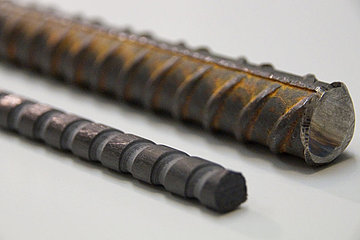
Rods
Rebars made of carbon, basalt, glass or combinations of materials are used. CARBOCON develops the materials together with its partners and manufacturers and applies them specifically in construction projects. Rebars made of carbon fibre-reinforced plastic are among the high-performance materials and can withstand up to 6 times higher tensile forces than comparable steel rebars.
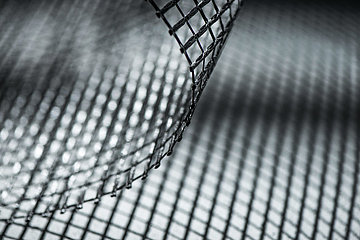
Mat reinforcement
50,000 individual carbon fibres are combined in a special manufacturing process to form a yarn, processed into a lattice structure and impregnated. These fabrics or mats are characterised by a wide variety of properties in terms of load-bearing capacity, flexibility, formability and also resistance to temperatures. CARBOCON always selects the most suitable materials for a specific project.
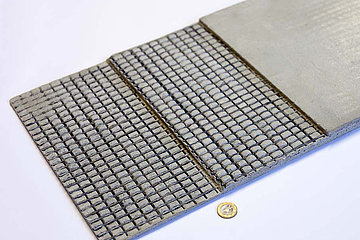
Fine-grained concrete
Concrete has several functions in the composite material of carbon reinforced concrete. The selection of the right concrete type is therefore important. An example of a specially developed product and application is TF10 TUDALIT from PAGEL (grain size 0-1 mm). In addition to the special fabric, this fine-grained concrete is the central element for strengthening with carbon reinforced concrete according to the existing national technical approval.
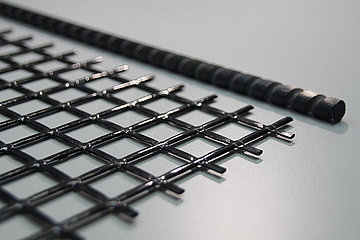
Hybrid application
The current state of the art and the requirements of bridge technology prompted CARBOCON developers and engineers to incorporate hybrid applications of different types of reinforcement into the projects. A combination of the fabrics/mats and bars offers a multitude of possibilities to achieve the best solution for the application.
What is fine-grained concrete?
Fine-grained concrete generally has a maximum grain size between 1–4mm. According to the standardised definition, all fine-grained concretes with a maximum grain size of less than or equal to 4mm are referred to as mortar. As the use of carbon reinforced concrete increased, however, the term fine-grained concrete was coined, since its properties usually correspond to those of high-performance concrete and the term fine-grained concrete therefore seemed more appropriate.
What is carbon concrete?
Carbon reinforced concrete is a composite material consisting of a (fine-grained) concrete and a non-metallic reinforcement in the composite, such as textile fabrics and rebars made of carbon, glass or basalt fibre.
How long has carbon reinforced concrete been available?
In the 1990s, researchers from Dresden worked for the first time on a composite material made of textile fibres and high-performance concrete. Textile fibre enables a weight reduction due to the minimisation of the concrete covering required in steel reinforced concrete to protect the steel.
Who researched carbon concrete in depth for the first time?
In Germany, between 1999 and 2011, under the initiative and leadership of Prof. Manfred Curbach, Prof. Peter Offermann, Prof. Chokri Cherif and Prof. Josef Hegger, more in-depth research into textile reinforced concrete was carried out in two Collaborative Research Centres of the Deutsche Forschungsgemeinschaft in Dresden and Aachen
Why CARBOCON?
CARBOCON is the leading partner when it comes to planning, developing and implementing carbon reinforced concrete projects. Due to our many years of experience in the field of carbon reinforced concrete and our broad network of industry partners, we can professionally master any challenge together with you in a direct contractual relationship or partnership.
Will carbon reinforced concrete replace steel reinforced concrete?
No, because that is not the aim of carbon reinforced concrete. CARBOCON wants to establish this high-performance, innovative and resource-saving composite material in the construction industry according to its potential and advantages. The current goal is to replace 20 % of steel reinforced concrete with carbon reinforced concrete in the near future.
What are the advantages of carbon reinforced concrete over steel reinforced concrete?
Carbon has several advantages over steel. In addition to corrosion resistance, it is mainly the lower density and higher load-bearing capacity that make carbon as a whole significantly more efficient than steel. Because carbon does not corrode, the components made of carbon reinforced concrete are also much more durable and at the same time allow for more slender designs. Since a concrete cover is no longer required for corrosion protection, there is also a high potential for saving on materials and resources.
What are the application areas for carbon reinforced concrete?
Carbon reinforced concrete can be used in the most diverse areas of construction, such as new construction, strengthening and reconstruction. Projects in bridge construction, structural engineering and prefabricated construction have already been realised. In the field of reconstruction, these include the strengthening of silos, bridges, canal structures and historical and listed buildings.
What is the difference between steel reinforced concrete and carbon reinforced concrete?
The main difference lies in a more efficient and corrosion-resistant reinforcing material, which enables lighter, more delicate and higher load-bearing constructions and a new variety of shapes.
How is a fabric/reinforcement mat made from carbon fibres?
Up to 50,000 carbon fibres are combined in one yarn and then processed and impregnated in a lattice structure. Both laying and warp knitting techniques are possible.
How is carbon reinforced concrete produced and how is it different to steel reinforced concrete?
Carbon reinforced concrete, like steel reinforced concrete, can be produced by classic casting or spraying processes. The application of a manual laminating process is also possible. Due to the reduced cross-sectional dimensions, smaller equipment can be used for reinforcing measures with carbon concrete.
How expensive is carbon reinforced concrete compared to steel reinforced concrete?
The more efficient raw materials (e.g., carbon, glass, fine-grained concrete) are more expensive than conventional steel reinforced concrete. But due to the many advantages (sustainability, resource savings, thinner cross-sectional dimensions, more efficient process flows and low transport costs), carbon reinforced concrete solutions are already highly competitive in the entire value creation process. In addition, the construction principle based on carbon reinforced concrete opens up fields of application that could not previously be realised with steel reinforced concrete.
How big are the savings on resources and materials when using carbon reinforced concrete?
Depending on the field of application and requirements, material and resource savings of up to 80% are possible.
Are there processes in place for recycling carbon reinforced concrete?
A separation of the two basic components - carbon and concrete - was achieved very early in the development of the technology. Later, large pilot studies were carried out simulating the recycling process. The recycled carbon is fed through the same processes known in the aerospace, automotive and sporting goods industries. The concrete recycling process is then carried out on the same line already established for steel reinforced concrete.
What is the future of carbon concrete?
Carbon reinforced concrete is the future in the construction industry. Increasingly scarce resources, the corrosion of steel reinforcement and its consequences in steel reinforced concrete construction open up a large field of application for carbon concrete. Whether and to what extent carbon reinforced concrete can replace steel reinforced concrete will be seen in the future.
Where in Germany has carbon or textile reinforced concrete been used?
The use of this innovative technology has been successfully demonstrated in a large number of projects. CARBOCON is currently working on many construction projects and is planning, for example, the reconstruction and strengthening of existing bridge structures. In addition, we are working on development projects with industry partners of various kinds. Further information can be found under CARBOCON References.
The CARBOCON team is also at your disposal as a central contact partner with interdisciplinary expertise. In connection with our range of services, this enables us to take care of various customers with different requirement profiles.
CARBOCON supports the projects from the first analysis to the subsequent application. The spectrum of projects ranges from comprehensive consulting on strategic, operational and technical issues in the use of carbon reinforced concrete to 'classic' planning for the strengthening of bridges and other structures with carbon concrete.
What can we do for you?
Give us a call. +49 351 48205 500
